Luxembourg Food Dishes: Basic Overview
Common Ingredients
Common Cooking Methods
Courses
Meals
Key Taste
Eating Etiquette
Meal Presentation
Culinary Festivals
Influence and Fusion
Popular Types of Luxembourg Dishes
-
Stews, Soups, and Braised Dishes
Stews, soups, and braised dishes are popular main dishes in Luxembourg cuisine.
These dishes are usually hearty, nutritious, and made with various local ingredients, especially meat, dairy products, and vegetables.
Luxembourgers often serve them with boiled potatoes or bread.
-
Pastries and Cakes
Cakes and pastries are well-known desserts, snacks, and appetizers in Luxembourg.
Most Luxembourg pastries are sweet and made with seasonal fruits, but savory pastries are also popular.
Certain dishes are tied with Luxembourg festivals and holiday meals.
Luxembourg dishes, also known as Luxembourgish or Luxembourgian dishes, are specialties widely prepared in Luxembourg, a country in Western Europe.
These dishes are strongly influenced by the cooking traditions of neighboring countries, especially German delicacies and French culinary dishes.
Traditional Luxembourg food mostly originated in peasant cuisine, hence its simplicity and heartiness. Local dishes are usually made from locally sourced meat, vegetables, and dairy products.
Scroll down to learn more about the common attributes of traditional food in Luxembourg, its international popularity, and health values.
Next, I will describe the 15 most popular dishes from Luxembourg, the general features of local cuisines, and recommended food and drink pairings.
15 Famous Luxembourg Dishes
I will show you the 15 most well-known dishes from Luxembourg. Use advanced filters like alphabetical sorting, main ingredients, taste, cooking methods, dish types, courses, and global popularity to navigate this content more easily.
There are also filters based on specific culinary styles, such as traditional, national, street food, fusion, exotic, and vegetarian options, which will help improve your reading experience.
Judd mat Gaardebounen
- National
- Traditional
Judd mat Gaardebounen is a famous Luxembourg dish consisting of smoked pork collars, broad beans, and a delicious creamy sauce. It first appeared in Gottingen, a town located in the southeastern part of the country.
Judd mat Gaardebounen is very popular in summer when local beans are at their best. Some sources claim that judd mat Gaardebounen was introduced to Luxembourg by Spanish troops in the 16th or 17th centuries.
This history explains the dish’s name: Judd most likely came from the Spanish word Judía, meaning “bean.” A hearty serving of judd mat Gaardebounen is often accompanied by boiled potatoes and sometimes a splash of vinegar or mustard.
Bouneschlupp
- National
- Traditional
Bouneschlupp is a traditional Luxembourg soup made with green beans, potatoes, onions, leeks, and bacon. These ingredients result in a comforting, hearty, and savory dish.
Like judd mat Gaardebounen, the best bouneschlupp is available in summer or harvest season. This soup also comes in a potato-based variant called gromperenzopp.
Gromperekichelcher
- Street Food
- Traditional
Gromperekichelcher is the Luxembourg version of potato pancakes, with grated potatoes, eggs, flour, shallots, and seasonings as the main ingredients.
With a crispy exterior and soft, savory interior, gromperekichelcher is a popular street food, especially during Christmas, Fuesent (Carnival), and other festive events.
Luxembourgers typically enjoy golden gromperekichelcher with applesauce and mustard. Besides being a street food dish, this potato pancake is also an excellent starter or side dish during dinner.
Quetschentaart
- Traditional
Quetschentaart is a famous Luxembourg open fruit tart available at almost every bakery across the country. It has the best taste in autumn when plums (quetsch ) are freshly harvested.
A typical quetschentaart is made with fresh, ripe plums laid on a shortcrust pastry, creating a balance of sweet and slightly tart flavors.
During the plum season, Luxembourg families often gather around the table and enjoy an afternoon coffee with a delicious slice of quetschentaart.
Friture de la Moselle
- Traditional
Friture de la Moselle is a Luxembourg fish dish made with fish caught from the Moselle River, such as perch, roach, or rudd. These fish are seasoned, breaded, and deep-fried until crispy, then served with lemon wedges, french fries, and various sauces for dipping.
To make friture de la Moselle, the fish should be gutted beforehand, but very small ones are mostly left whole. This fried fish is particularly popular in the spring and summer months, often enjoyed in outdoor settings alongside a glass of local Moselle wine.
Träipen
- Traditional
Träipen is the traditional Luxembourg blood sausage and a winter delicacy. Its main ingredients are pork (preferably derived from the hog’s head), blood, fat, breadcrumbs, and chopped vegetables like onions and cabbage.
The preparation of träipen involves stuffing the ingredients into a sausage casing, boiling, and frying it until crispy. In Luxembourg, blood sausage is a main dish served alongside boiled potatoes, apple sauce, and bounekräitchen (summer savory).
Träipen is a common sight at Christmas parties, just after Midnight Mass. You can also find it during the first Sunday of the Lenten season or All Saints’ Day.
Hong am Reisleck
- Traditional
Hong am Reisleck, translating to “chicken in Riesling,” is a classic Luxembourgish dish that involves braising chicken in a sauce made from Riesling wine, cream, onions, and various herbs. It boasts tender, flavorful chunks of chicken with a creamy, aromatic sauce.
The acidity of the Riesling cuts through the richness of the sauce, balancing the flavor of Hong am Reisleck beautifully. Locals often accompany this chicken dish with boiled potatoes or noodles.
Huesenziwwi
- Traditional
Huesenziwwi is a traditional hare stew in Luxembourg cuisine. It comprises marinated hare chunks braised in a thick sauce prepared with red wine, onions, blood, herbs, sour cream, and optional vegetables.
As part of huesenziwwi preparation, the hare has to be marinated for 48 to 72 hours before being cooked in lard and flambéed with cognac. Locals often serve this hare stew with cabbage, boiled potatoes, dumplings, and local wine.
Huesenziwwi is available on the menus of Luxembourg’s best restaurants during the game season, which runs from October to December.
Äppelklatzen
- Traditional
Äppelklatzen is a popular apple tart found in Luxembourg. People prepare it by peeling, cutting, and coring apples into rings, which are then dried, sprinkled with spices, wrapped in pastry, and baked.
Äppelklatzen is a delicious dessert considered one of the must-haves during the Christmas celebration. Many people love its chewy texture and concentrated sweet-tart apple flavor.
Verwurelter
- Street Food
- Traditional
Verwurelter, literally “the messy one,” is a little knot-shaped donut that every Luxembourger enjoys. Its main component is a yeast dough that is shaped into knots or twisted forms, deep-fried, and dusted with powdered sugar.
Verwurelter is a sweet, fluffy, and crispy treat that is particularly popular during the Carnival season leading up to Lent. This knotted doughnut is also one of the top fair foods for Fuesent.
Vol-au-vent
- Traditional
Vol-au-vent, literally “flight in the wind” or “windblown,” is a popular puff pastry snack and appetizer in Luxembourg. Hailing from France, it is an irreplaceable dish at many dinner parties in Luxembourg and multiple European countries.
A typical vol-au-vent traditionally consists of a large hollow puff pastry case filled with a creamy chicken, mushroom, and vegetable mixture. These ingredients result in a pleasant blend of the buttery, creamy taste and flaky texture.
Bouchée à la Reine is a more substantial version of vol-au-vent and can get twice as big.
Pâté au Riesling
- Traditional
Pâté au Riesling, also known as Rieslingspaschteit, is a traditional log-shaped Luxembourgish pastry made by encasing pâté in a flaky pastry crust. The local version of pâté consists of pork or veal, Riesling wine, pork liver, spices, and leeks, among other things.
Riesling adds a unique, slightly acidic flavor that complements the richness of the meat in pâté au Riesling. Many Luxembourgers regard this delectable dish as the queen of pies and like to serve it cold with a glass of Riesling.
Pâté au Riesling is often enjoyed as an appetizer or a main course and is particularly popular during the hunting season and festive occasions.
Flammkuchen
- Traditional
Flammkuchen, known as tarte flambée in French, is a popular Luxembourg with roots in the Alsace region in France. It resembles a thin-crust pizza garnished with onion slices, cream cheese, and lardons (small strips or cubes of pork fat).
People often prepare flammkuchen by baking it in a traditional wood-fired oven, which gives it a crispy edge and a slightly smoky flavor. The light, crisp base and the creamy, savory toppings of this pizza-like dish make it a perfect accompaniment for local wine.
Flammkuchen was mainly a homemade dish until the “pizza craze” hit the regions in the 1960s.
Kniddelen
- Traditional
Kniddelen, literally “small knot” or “nodule,” is the Luxembourg take on knödel, boiled dumplings popular in many European countries. Its dough consists of flour, eggs, and water.
Luxembourgers often top the boiled dumplings with generous spoonfuls of rich cream sauce, bacon bits, and a light sprinkle of herbs. Wäinzoossiss mat moschterzooss is a popular food combo consisting of dumplings and sausage.
Kuddelfleck
- Traditional
Kuddelfleck is a traditional Luxembourgish dish made from beef tripe (cow stomach). The tripe is cleaned, boiled, breaded in breadcrumbs (optional), and then fried with onions and a mix of herbs and spices.
The unique savoriness of kuddelfleck goes perfectly with a side of boiled potatoes and a white wine sauce or a spicy tomato sauce. This offal dish showcases the Luxembourg tradition of nose-to-tail eating, ensuring no part of the animal goes to waste.
Now that you know about the most popular dishes in Luxembourg, I will go over the common features of this amazing cuisine.
What Is Special About Luxembourg Dishes?
The factors below play a significant part in making Luxembourg food offerings stand out from other European dishes.
Luxembourg cuisine is strongly shaped by the culinary traditions of neighboring countries, especially France, Belgium, and Germany.
French and German cuisines, in particular, have contributed to the more sophisticated aspects of Luxembourg’s food offerings.
The agricultural past of Luxembourg results in a large number of local dishes with peasant origins. They are mainly made from locally available ingredients and designed to be hearty and filling for working people.
Notably, Luxembourg has a strong tradition of rich dishes and pastries made with meat and dairy products. These dishes are often available in large portions.
The local rivers, such as the Moselle, have provided a source of fish, which are featured prominently in Luxembourgish cuisine. Locals often prepare them in traditional Riesling sauces.
Riesling wine is a common beverage in Luxembourg cuisine, but there are other beverage choices for complementing local food.
What Beverages to Pair With Luxembourg Dishes?
The majority of Luxembourg dishes are ideal accompaniments for the following three popular beverages.
Wine
Luxembourg is home to many famous vintage wines, especially Moselle wine (mainly Riesling). Typical dishes in local cuisine that can pair with this type of wine are savory specialties like friture de la Moselle, huesenziwwi, and pâté au Riesling.
Beer
People in Luxembourg often enjoy beer with savory snacks and dishes, such as judd mat Gaardebounen, gromperekichelcher, träipen, and kniddelen.
Coffee
Coffee is the traditional drink for desserts and light pastries, including quetschentaart and äppelklatzen.
What do you think about Luxembourg food? Do you have other recommendations for my list? I’d love to hear your feedback, so feel free to let me know your thoughts in the comment section. Don’t forget to share this list of Luxembourg dishes with your friends.



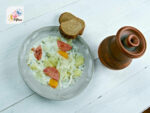
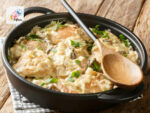
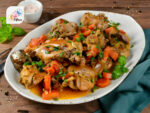
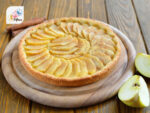
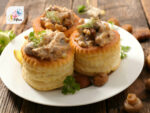

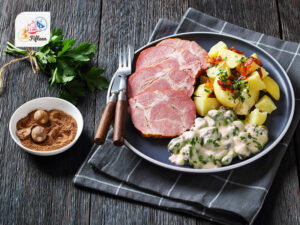
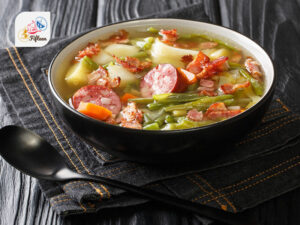
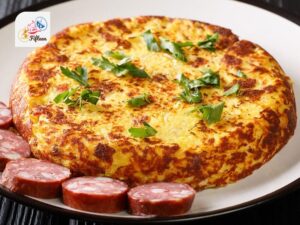
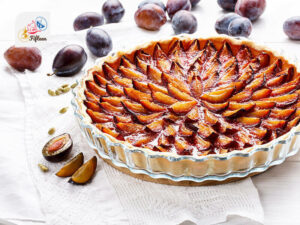
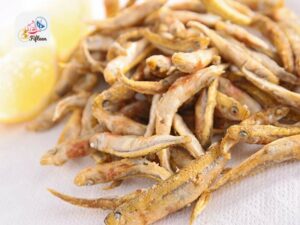
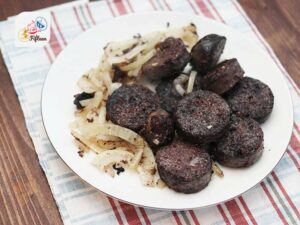
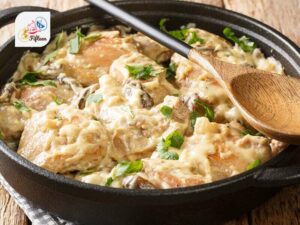
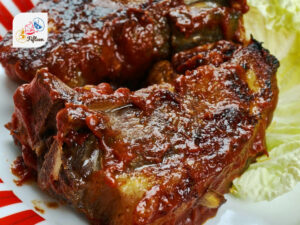
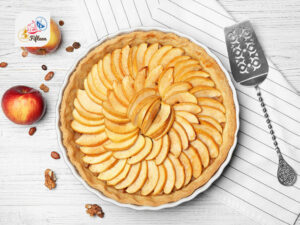
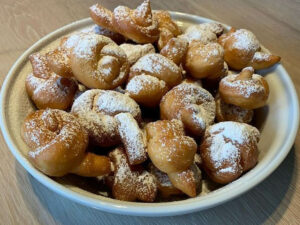
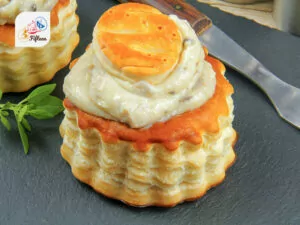
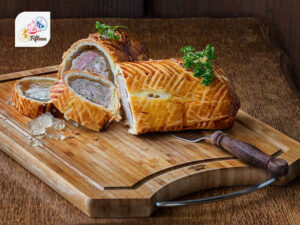

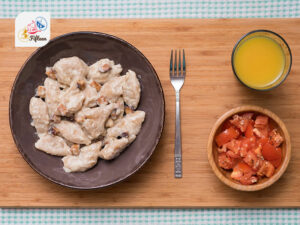
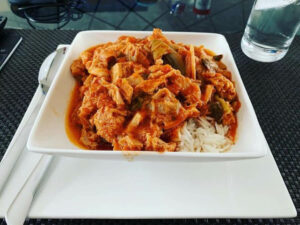
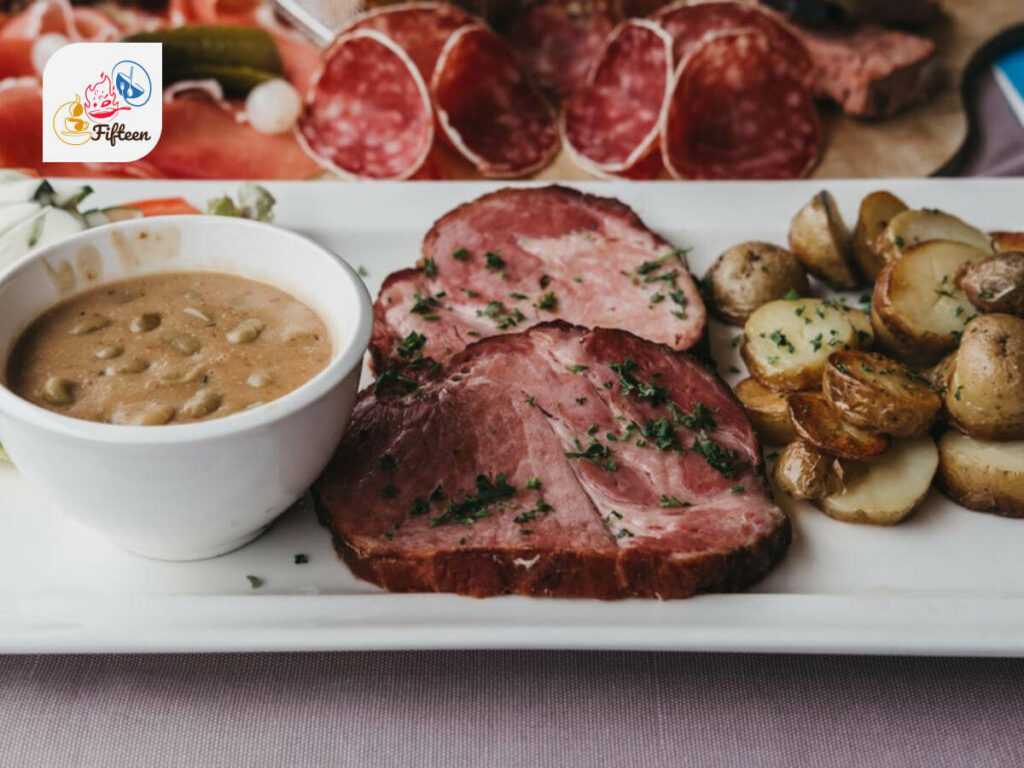
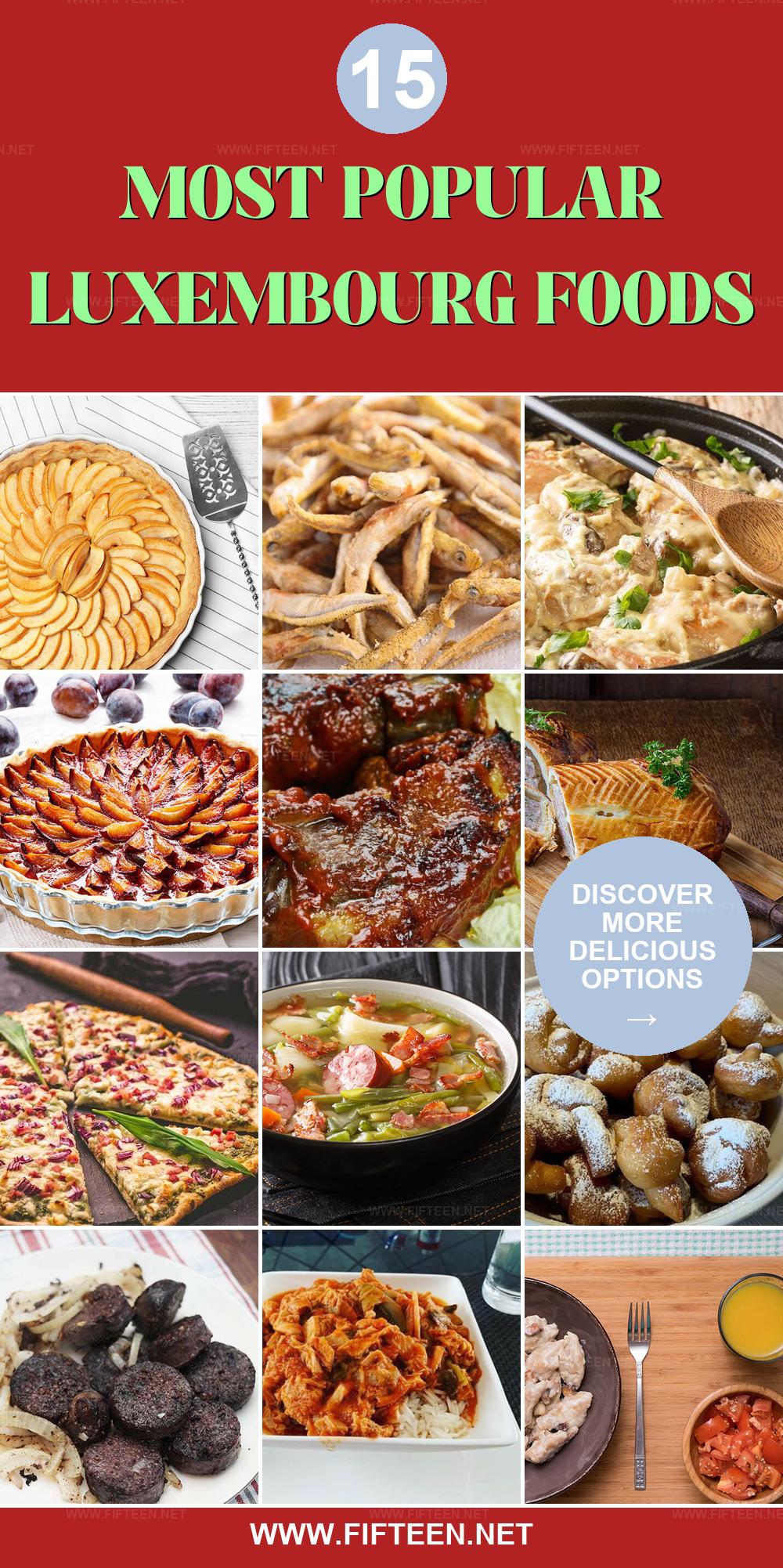
Jamie Scott
Editor in Chief, Senior Content Writer
Expertise
Home Cooking, Meal Planning, Recipe Development, Baking and Pastry, Food Editor, Cooking-video Maker, Western Food Evaluation Expert
Education
Le Cordon Bleu College of Culinary Arts
Local Community College, New York, NY
Jamie Scott is a skilled culinary expert and content creator specializing in Western cuisine. With over 15 years in the culinary field and formal training from Le Cordon Bleu, Paris, Jamie deeply understands how to blend nutrition with delicious flavors. His passion for cooking matches his commitment to making healthy eating accessible and enjoyable.
On Fifteen.net, Jamie brings a fresh perspective to classic dishes and beverages, offering readers insightful recipes, cooking tips, and a fresh view on meal planning that emphasizes taste, health, and simplicity.